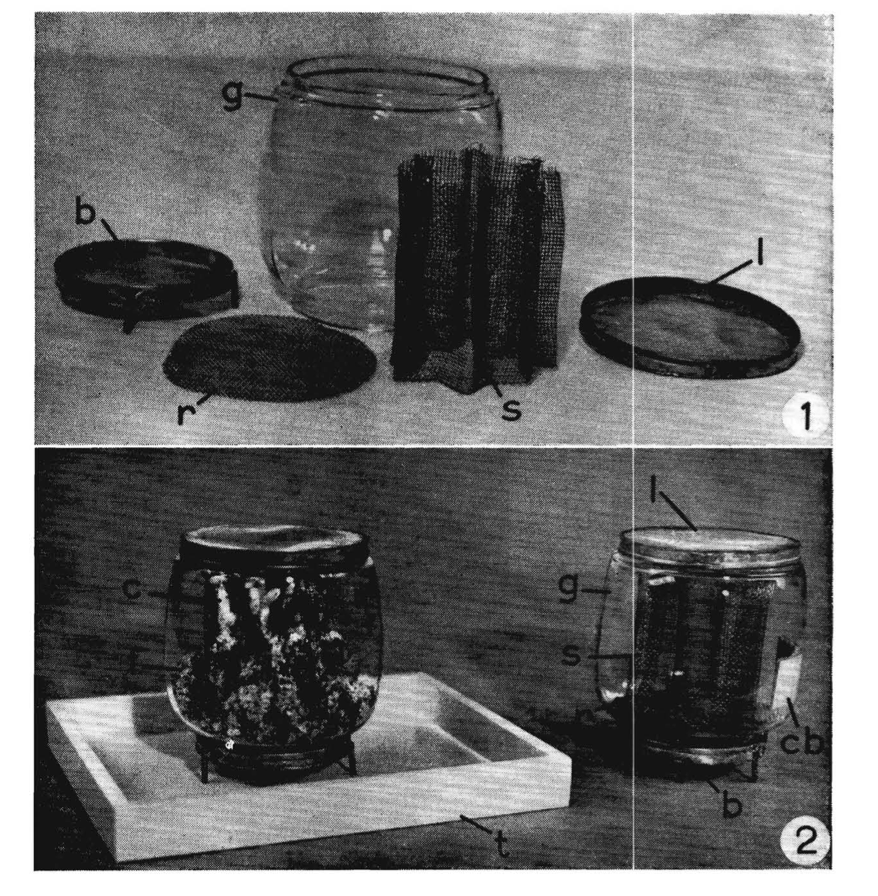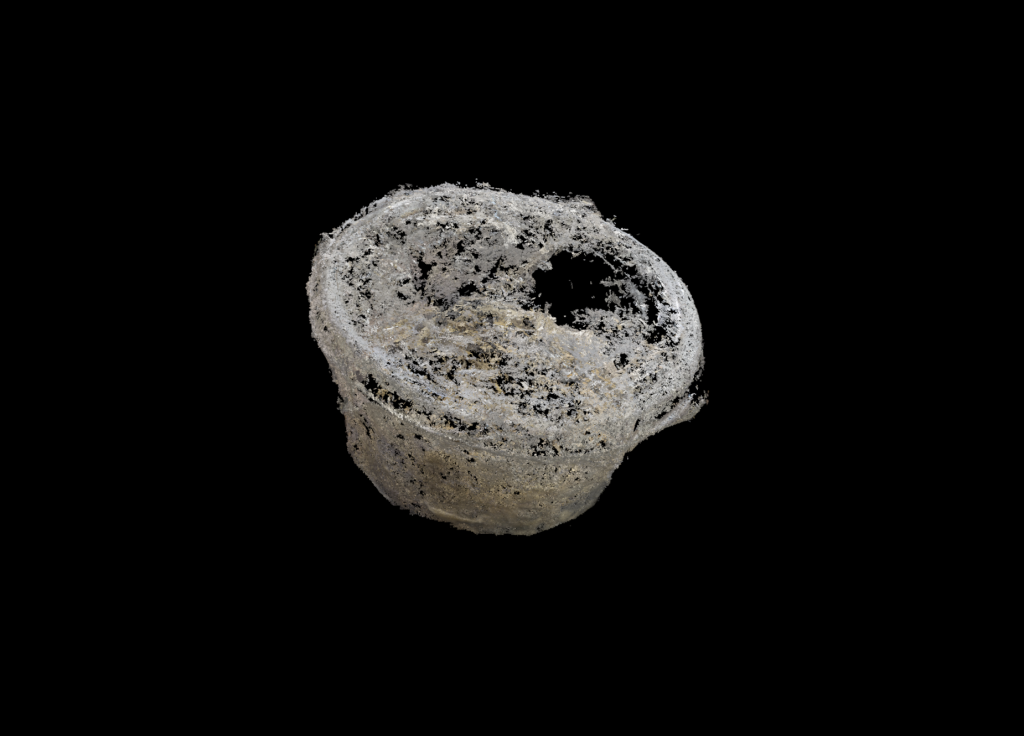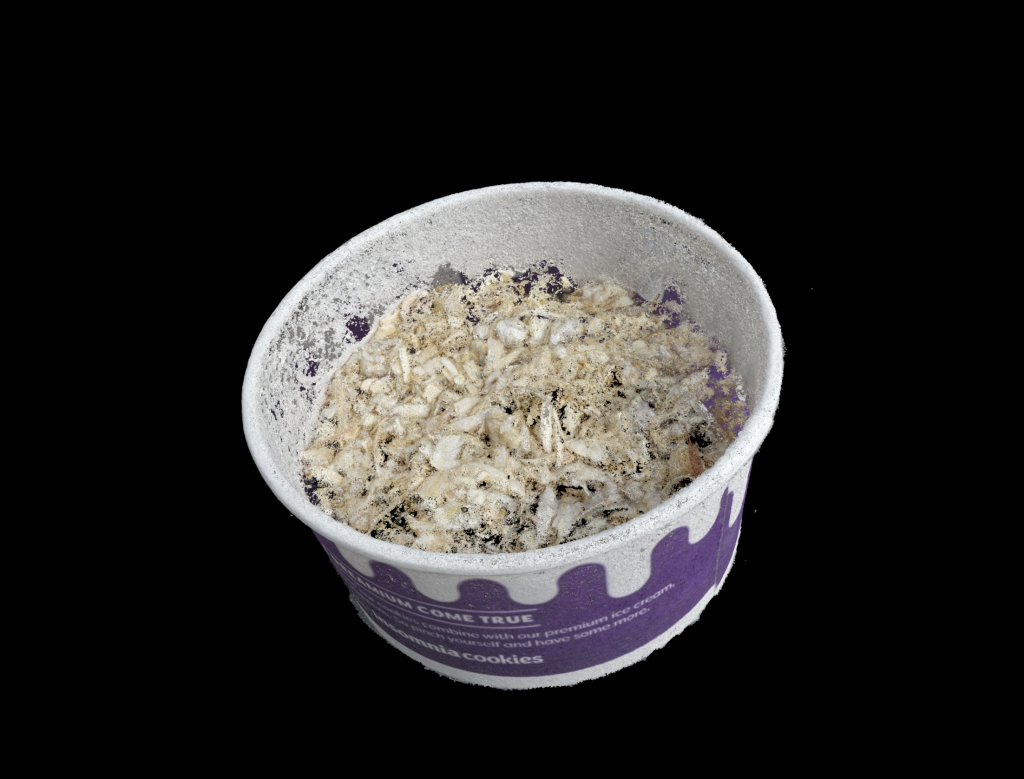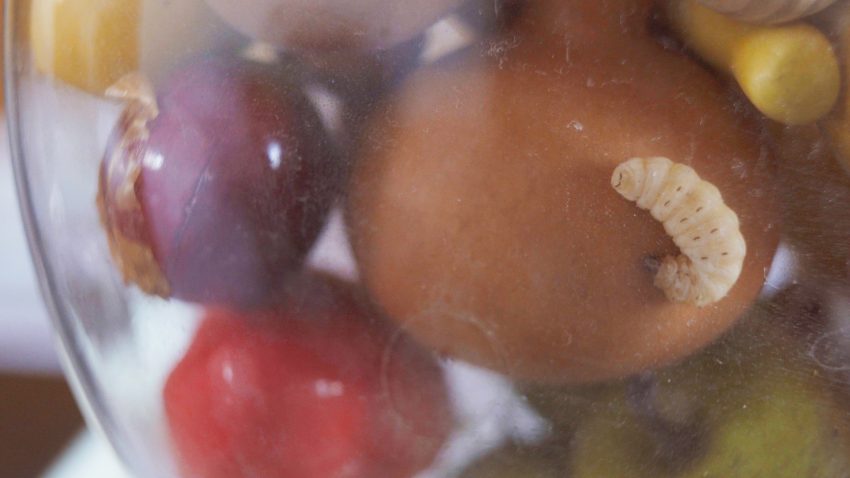By Jiayu Yang
Though you may not have heard of wax worms (also known as the greater wax moth or Galleria Mellonella), these creatures have found their way into our everyday lives. Wax worms are usually seen as parasites that damage bee colonies by spinning webs, consuming beeswax, and spoiling honey. Recently, these parasites have been re-evaluated and utilized as organisms for immunological experimentation and biodegrading plastic waste. In addition, they’ve started being sold as fatty pet treats. Natural beehives are no longer the main hosts of wax worms. Today, they are found in dedicated artificial habitats, such as jars, trays, or cups designed for their growth in laboratories, farms, and domestic spaces.
These artificial habitats, at the center of human-waxworm interactions, are the focus of my project. As a Graduate Extern at the Loretta C. Duckworth Scholars Studio and a Ph.D. candidate in the Documentary Arts and Visual Research Program in the Film and Media Arts Department, I’m working with 3D modeling and Virtual Reality (VR) to create an immersive archive of artificial habitats that host wax worms.
Traditionally, documentaries reveal realities beyond the viewer’s reach. Continuing this documentary pursuit, my project uses 3D and VR technologies to capture more-than-human reality, with attention to the living experience of the space within artificial habitats. Exploring the technologies’ unique capacity to simulate a wax worm’s experience of space at an impossible scale, this project hopes to reframe wax worms as active agents in an ecology and cultivate greater sensitivity to the interconnections between humans and the more-than-human species.
Artificial Habitats and Parasites
Coming from a family that rears and sells wax worms for pet feed and lab use in South China, I have seen my family constantly update artificial habitats to maintain healthy ecologies for the wax worms. According to entomologists, wax worms prefer dark spaces and spin webs that tangle with their frass (insect poop) to block detection and prepare for pupation (Paddock, 1918; Marwaha, 2023). While these webs are essential for the worms to create a habitable hive, the webbed artificial habitats, often less ventilated than beehives, are at increased risk of mold and mites.
To rear wax worms for human use, these artificial habitats must be similar enough to beehives for the worms to inhabit and parasitize. Yet they also have to act not exactly like hives, so the worms are contained and accessible. This prompted me to research various designs of wax worm artificial habitats and experiment with them to see how these insects navigate the ecological nuances between the hive, the worms, the mold, and the mites.
One clever design is the “Cage,” made in 1961 for laboratory rearing (Fig.1). In the cage, a copper screen is added in the middle of a glass globe to simulate a hive, so the wax worms can wander and spin webs onto the screen, instead of into the depth of the molded mix of food and their frass at the bottom. Similarly, there are other alternatives for domestic rearing, such as tinkering with materials like sauce cups, mason jars, newspapers, and egg cartons.

So far, despite various attempts, there are still ample chances of uncontrolled factors making their way into these habitats, causing havoc. The dynamic interplay between containment and contamination shows that there is a vast ecology beyond the one-directional parasitic relation. Then, these artificial habitats should be viewed not simply as objects, but as a topography of webbed relations.
Photogrammetry, Particles, and VR Immersions
This project aims to make these webbed relations palpable by replicating and modifying various artificial habitats in three-dimensional digital space. In parallel with building the structures in real life, I am working with photogrammetry and the 3D-modeling platform, Unity, to render the interior of the habitats experienceable in an immersive Virtual Reality (VR) environment.
Using photogrammetry (a method for capturing realistic 3D representations of physical space), I aim to reconstruct 3D models of wax worm habitats using photographs of the physical objects taken from every angle. I will generate multiple models of the habitats throughout the life cycles of the worms living in these habitats. Showcased sequentially, the 3D models become a spatiotemporal representation of wax worms’ life cycles, entangled with human designs. Below (fig. 2 and 3) are examples of the 3D models I have created using photogrammetry and Agisoft Metashape.


Fig. 3 (on the right) An ice cream box filled with oatmeal to rear wax worms at home.
However, these models face limitations when it comes to modeling transparent objects or enclosed miniature interiors, as the space or surfaces are partially unreadable by a camera or scanner (fig. 4).

My next step, then, is to work with the limits of photogrammetry and build the miniature interior space in the 3D platform, Unity. Working with Unity’s VFX Graph, I am to visualize the interior space as dynamic particles and trails that simulate the webs tangling with the frass. These webs are indicators of the liveliness of wax worms, but also threats to the artificially designed visibility and cleanliness.
As the project progresses, I plan to render these webs and particles interactive for viewers and invite them to participate in the unfolding of the life cycles of wax worms by spinning webs together in the virtual habitats.
Potentials
Through this project, I aim to experiment with an immersive mode of visual speculation that translates existing biological and empirical knowledge into embodied experiences of a more-than-human world. In this case, 3D modeling and VR technologies effectively help to simulate the spatial details of animal worlds.
By simulating the otherwise hidden worlds, I see the potential of these technologies to reveal the more nuanced and complex ecologies that often elude human-centric knowledge-making. In the future, I foresee the application of 3D modeling and VR technologies for expanding our understanding of other biological phenomena. By attending to organisms’ agency and interactions, we can foster more ecological thinking with these technologies.
Reference
Bronskill, J. F (1961) A cage to simplify the rearing of the greater wax moth, Galleria mellonella (Pyralidae). Journal of the Lepidopterists’ Society 15(2): 102-104.
Marwaha, L. (2023). The wax moth: A problem or a solution? Singapore: Bentham Science Publishers Pte. Ltd. http://dx.doi.org/10.2174/97898151238211230101
Paddock, F. B. (1918). The beemoth or waxworm. College Station, TX: Agricultural and Mechanical College of Texas. https://doi.org/10.5962/bhl.title.57185
